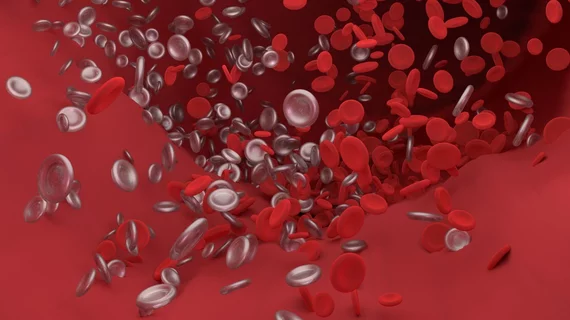‘Low threshold for diagnostic imaging’ recommended to detect blood clotting in COVID inpatients
Hospitalized COVID-19 patients are at heightened risk for life-threatening venous thromboembolism (VTE), so clinicians should not hesitate to order imaging for the two conditions that jointly lead to VTE—deep vein thrombosis and pulmonary embolism.
So recommend researchers at the University of Amsterdam whose findings posted online May 5 in the Journal of Thrombosis and Haemostasis.
Dr. Saskia Middeldorp and colleagues further found that COVID patients needing care in the ICU are in particularly pronounced danger of developing VTE.
Citing prior studies that yielded similar results, the authors report that, in their hospital—where anti-clotting drugs or other interventions (aka thrombosis prophylaxis) are routinely administered to COVID-positive patients—VTE turned up in 47% of 74 ICU patients.
At 21 days post-admission, cumulative incidence was 59%.
“The very high incidence in ICU patients in the present study may be partially explained by the initiation of a screening approach, although the risk remained high if only symptomatic VTE was considered,” Middledorp and co-authors write, noting that this was the case in 28% of patients (cumulative incidence: 34% at 21 days).
Meanwhile, in COVID-19 patients admitted to non-ICU inpatient rooms, 4 of 123 patients (3%) were diagnosed with symptomatic VTE despite having received thrombosis prophylaxis.
The researchers note that additional imaging in the form of CT pulmonary angiography was performed for patients who were short of breath and had falling blood-oxygen levels in the arteries (hypoxemia).
The authors point out that patients in the study cohort were considered COVID-positive when their lab tests came back negative but they had COVID-suggestive symptoms, no alternative diagnosis and a chest CT showing lung abnormalities now familiar to radiologists with experience diagnosing COVID-19.
“Based on the present findings, we believe the threshold of suspicion of VTE in COVID-19 patients should be low and elicit appropriate diagnostic testing and treatment if VTE is diagnosed,” Middledorp et al. comment in their discussion. “The clinical value of ultrasound screening of the lower extremities in ICU patients with COVID-19 is a matter of debate. However, given the high risk of symptomatic VTE in ICU patients, screening followed by initiating therapeutic anticoagulation may be justified in patients diagnosed with asymptomatic (proximal) DVT to prevent extension and embolization.”
The study is available in full for free (click PDF icon).

